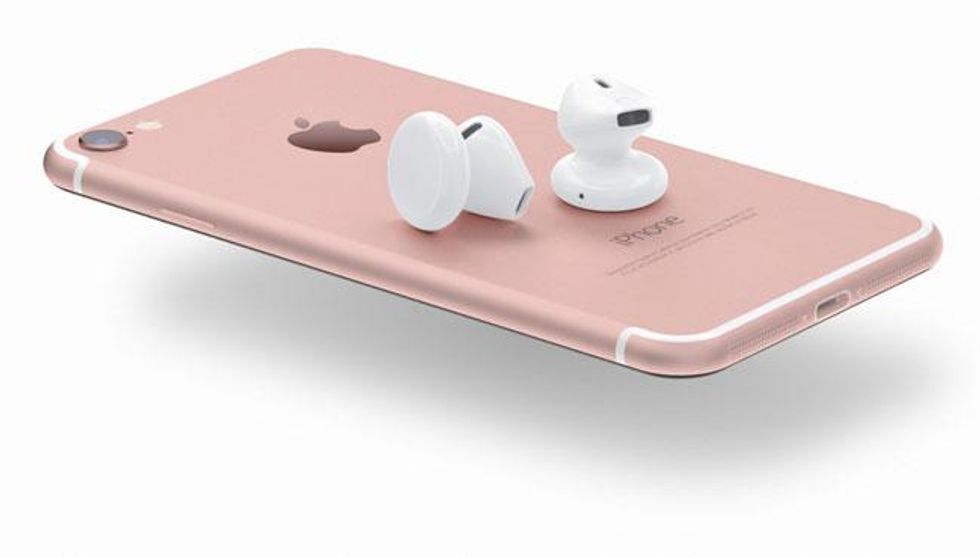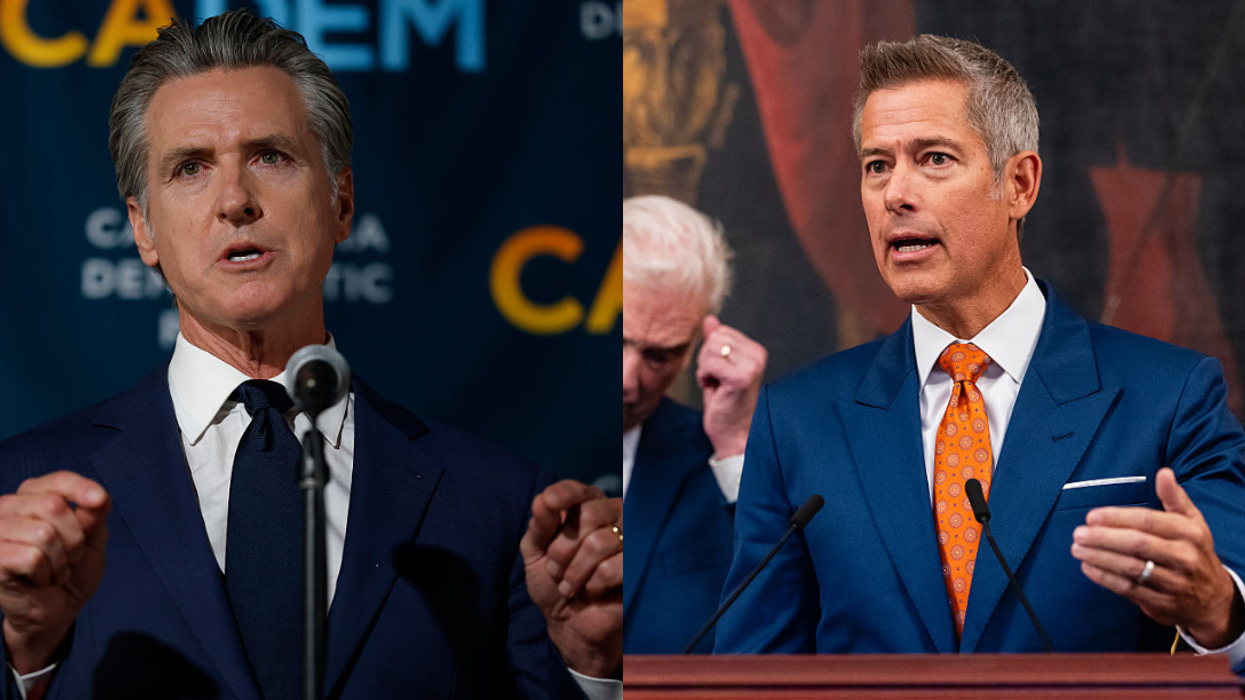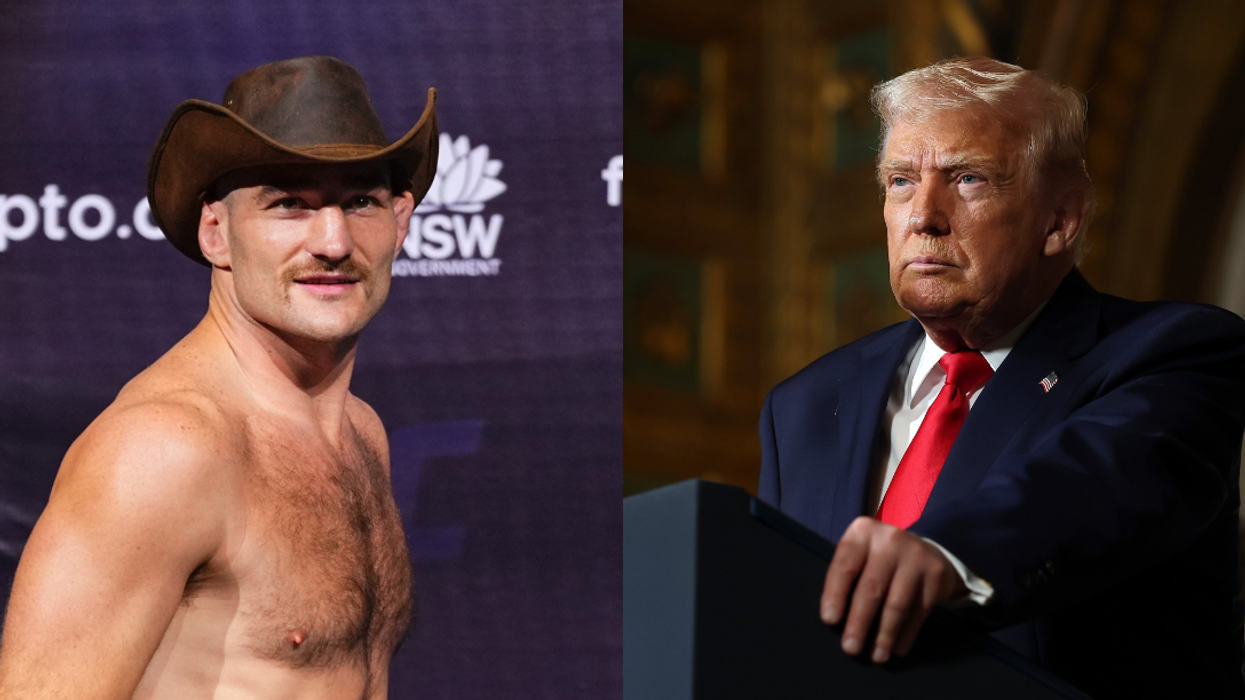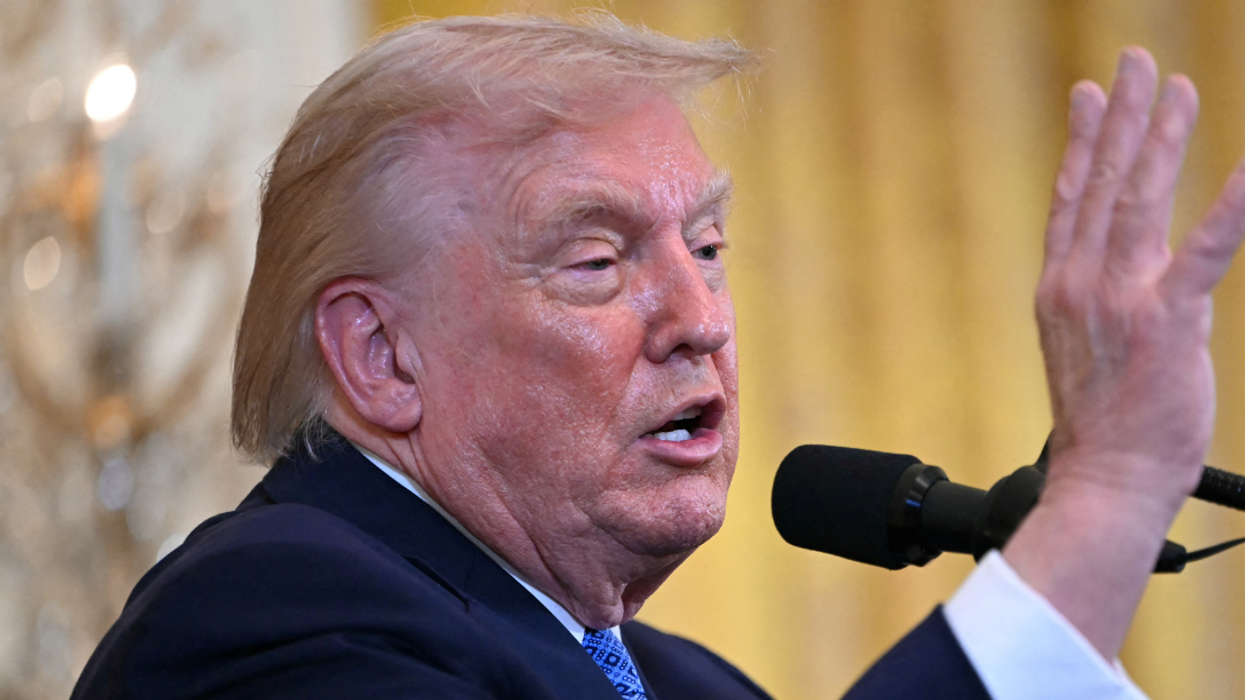Tech giant Apple’s bold move has opened up the company to consumer backlash.
During a tech event on Wednesday, Apple announced it would forego a standard 3.5mm headphone jack on their new iPhone 7 and iPhone 7 Plus smartphones. The decision to get rid of a single-use analog port allowed more room for a larger battery, additional camera components, a 7-megapixel front-facing camera and the Taptic Engine haptic system that drops the iPhone’s mechanical “home” button for a static, pressure sensitive version.
However, the new phones will still ship with a pair of earbuds that work using Apple’s Lightning connector as well as an adapter (replacements cost $9 each) which will still allow users to use their 3.5mm pair. Apple will offer new $159 wireless AirPods which will work with the company’s new W1 chip that enables the devices’ wireless audio streaming. The AirPods are a boon for audio lovers because there is no loss of sound quality before audio gets to the digital-to-analog converters in your ears. Apple stressed that the AirPods would offer reliable connections using iCloud IDs as well as Bluetooth and proprietary technology.
Phil Schiller, Apple’s head of marketing, said the decision to remove the headphone jack was an act of “courage” to “move on and do something new that betters all of us.” Many disagree.
In a piece for The Verge back in June, Nilay Patel called the very notion of removing the standard headphone jack from the iPhone “user hostile and stupid.”
“The traditional headphone jack is a standard for a reason — it works. It works so well that an entire ecosystem of other kinds of devices has built up around it, and millions of people have access to compatible devices at every conceivable price point,” Patel wrote. “The headphone jack might be less good on some metrics than Lightning or USB-C audio, but it is spectacularly better than anything else in the world at being accessible, enabling, open, and democratizing.”
Phil Schiller countered Patel’s argument that the decision to remove the headphone jack is “user hostile” as well as the suggestion that the move is a digital rights management (DRM) scheme that restricts usage of proprietary hardware and copyrighted works. Patel noted this in a follow-up piece published September 8: “The idea that there’s some ulterior motive behind this move, or that it will usher in some new form of content management, it simply isn’t true,” Schiller said. “We are removing the audio jack because we have developed a better way to deliver audio. It has nothing to do with content management or DRM — that’s pure, paranoid conspiracy theory.”
Writer Henry T. Casey also leveled criticisms at Apple, calling the move “greedy,” “egotistical,” and “short-sighted.” There is “no technology as ubiquitous as that 3.5mm jack,” he wrote. John Paczkowski, a managing editor for Buzzfeed, agreed. While he acknowledged that Apple “has been pretty savvy about moving away from legacy standards and adopting new technology,” he also
opined that “when you’re killing a century-old standard around which the entire audio industry developed, it’s wise to take precautions.”
The audio jack “is among the oldest existing electrical standards,” Paczkowski wrote, noting that it was invented for use with telephone switchboards in the late 1800s. “Originally 6.35-millimeter in width, it was reduced to 3.5-millimeter in the ’60s, a transformation that made it pervasive across most every piece of electronic audio equipment you can think of — home stereos, car stereos, camcorders, guitar amps, laptops, airplane entertainment systems, cochlear implants, smartphones, and — until today — the iPhone.”
Opposing views are similarly impassioned. CNET’s David Carnoy agreed with Phil Schiller and Apple VP Greg Joswiak that the move would usher in a new wireless future. “After being on the fence about the issue these last few months, I’ve come to the conclusion I can live without the headphone jack. And I think you can, too,” he wrote. Carnoy also argued that historically, iPhone users have “lived through” countless design changes, such as when the company removed the floppy drive and DVD-ROM from its computers. Users will “adapt to living without the traditional headphone jack,” Carnoy continued. “And if you don’t, well, you can always buy an Android phone with a headphone jack.”
For all the conflicted opinions about the change, Apple is not the first company to remove the headphone jack from its phones. Android phone manufacturers Lenovo (the Moto Z and Moto Z Force), and LeEco have already made the move. Liang Jun, LeEco’s president of research and development explained that the company believes its digital USB-C connection provides superior audio reproduction.
LeEco, Jun says, “chose to discontinue the 3.5mm audio jack in our second-gen phones to create a better quality audio experience for everyone to enjoy. With the 3.5mm audio jack, the stereo sound was compromised due to poor sound channel separation and the sound quality was compromised due to a mismatch between phone and headphones. By replacing the 3.5 mm jack with a Type-C port, it introduces a new approach to mobile audio transcoding and transmission and delivers what we believe is a much better overall audio experience for consumers.”
Jun pointed out that early sales results in China indicated that USB-C-only phones have a viable place on the market. “In China, the Le Max2 sold out in 57 seconds while the Le 2 sold out in 8 minutes and 22 seconds, with the total sales volume for the two phones combined reaching 750,000 units. In total, sales from all three phones garnered RMB 1.22 billion in one day, cleaning out our inventory at the time, and breaking sales records on one of the e-commerce sites that the phones were sold on.”
But Apple could very well do the same, and the move to remove the headphone jack altogether could be a prescient one.
Writer Robby Berman points out that Apple has a history of “often divining what customers wanted before they did.” Apple “forced USB connectors down our throats, but prior to USB, we had to shut down our computers just to plug and unplug things,” he wrote. “Apple was right.”
Berman also stressed that what “[Phil] Schiller is hinting at is one of Apple’s core beliefs. It’s that the company’s dreamers and engineers have the time/resources/imaginations to look around the corner and see the future in a way that consumers can’t. And it’s that vision, rather than a list of current wants and desires that points the way toward breakthrough products that people will love.”
Apple has remained a game changer in the tech industry because it has staunchly refused to cater to each and every one of its customers’ demands, Berman argues. “Companies that follow their customers’ wishes will always be doing just that: following,” he wrote. Leading the way to the future and “putting a dent in reality,” as Jobs put it, requires vision and — don’t laugh — courage.”














 Hide Blanket GIF by Instanietje
Hide Blanket GIF by Instanietje  Foam Reaction GIF
Foam Reaction GIF  Mental Health Therapy GIF by All Better
Mental Health Therapy GIF by All Better 

 Friday Driving GIF by FIA World Rally Championship
Friday Driving GIF by FIA World Rally Championship  episode 11 bad food GIF
episode 11 bad food GIF  talking homer simpson GIF
talking homer simpson GIF 
 Cartoons Button GIF by Nickelodeon
Cartoons Button GIF by Nickelodeon 
 @DanTML_/YouTube
@DanTML_/YouTube @voeqx7894/YouTube
@voeqx7894/YouTube @hendrxx9593/YouTube
@hendrxx9593/YouTube @anakinskywalker8877/YouTube
@anakinskywalker8877/YouTube @getshiddonn/YouTube
@getshiddonn/YouTube @sachmanyo/YouTube
@sachmanyo/YouTube